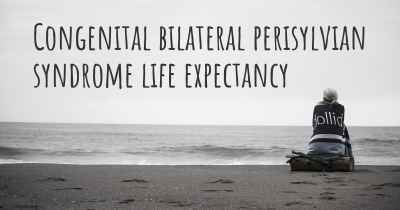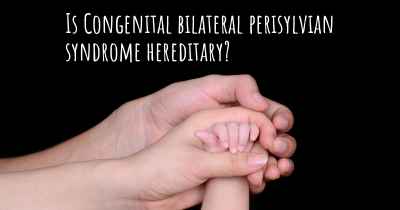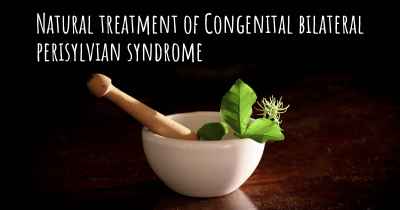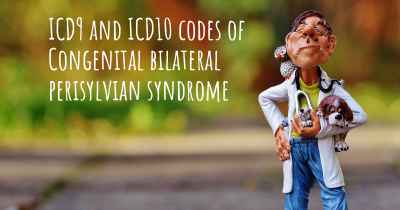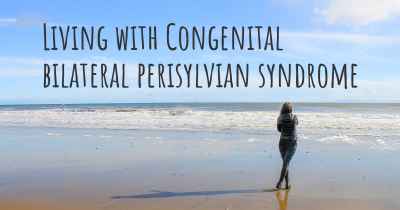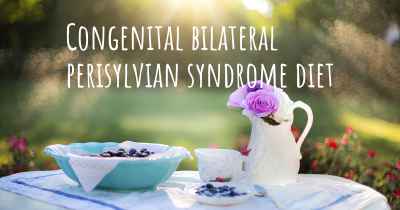Is it advisable to do exercise when affected by Congenital bilateral perisylvian syndrome? Which activities would you suggest and how intense should they be?
See if it is advisable for people with Congenital bilateral perisylvian syndrome to practice sports and which ones are the most recommended if you have Congenital bilateral perisylvian syndrome
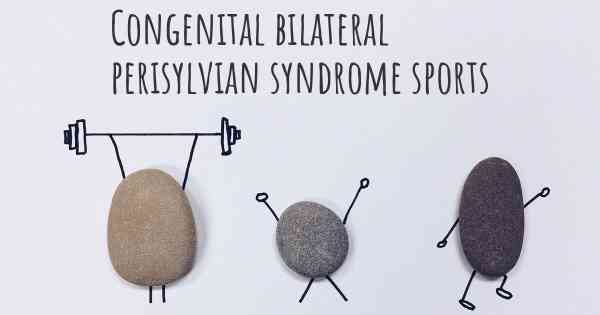
Congenital bilateral perisylvian syndrome (CBPS) is a rare neurological disorder that affects the development of the brain, particularly the perisylvian region. This condition can lead to various challenges, including difficulties with speech, language, and motor skills. While exercise is generally beneficial for overall health and well-being, it is important to approach it with caution when affected by CBPS.
Consulting with a healthcare professional who is familiar with your specific condition is crucial before starting any exercise regimen. They will be able to provide personalized guidance based on your individual needs and capabilities. They can assess your physical abilities, discuss any potential risks, and recommend appropriate exercises.
When it comes to exercise for individuals with CBPS, focus should be placed on activities that promote overall physical fitness, coordination, and motor skills development. Here are some suggestions:
- Aquatic therapy: Water-based exercises can be particularly beneficial for individuals with CBPS. The buoyancy of water reduces the impact on joints and muscles, making it easier to move and exercise. Swimming or participating in aquatic therapy programs can help improve strength, flexibility, and coordination.
- Yoga: Yoga is a gentle form of exercise that focuses on flexibility, balance, and relaxation. It can be adapted to suit individual needs and abilities. Yoga poses and breathing exercises can help improve body awareness, coordination, and overall well-being.
- Strength training: Engaging in light to moderate strength training exercises can help improve muscle tone and overall strength. It is important to start with low weights and gradually increase intensity under the guidance of a professional. Strength training exercises should target different muscle groups and be performed with proper form to avoid injury.
- Balance exercises: Balance exercises can help improve stability and coordination. Simple activities such as standing on one leg, walking on a balance beam, or using a stability ball can be beneficial. It is important to have proper supervision and support while performing these exercises to ensure safety.
- Aerobic exercises: Low-impact aerobic exercises such as walking, cycling, or using an elliptical machine can help improve cardiovascular fitness. These exercises should be performed at a comfortable intensity, gradually increasing duration and intensity over time.
Intensity of exercise should be determined based on individual capabilities and limitations. It is important to start with low to moderate intensity and gradually increase as tolerated. Overexertion should be avoided, as it can lead to fatigue and potential injury. Regular breaks and proper hydration are essential during exercise sessions.
Adaptive equipment and modifications may be necessary to ensure safe and effective exercise for individuals with CBPS. This can include using assistive devices, modifying exercises to suit individual needs, or seeking the assistance of a trained therapist or instructor.
Remember, consistency and patience are key when engaging in exercise with CBPS. Progress may be gradual, and it is important to listen to your body and adjust activities accordingly. Celebrate small achievements and focus on overall well-being rather than comparing progress to others.
In conclusion, exercise can be beneficial for individuals with Congenital bilateral perisylvian syndrome, but it is important to approach it with caution and guidance from a healthcare professional. Aquatic therapy, yoga, strength training, balance exercises, and low-impact aerobic exercises are some suitable options. The intensity of exercise should be personalized and gradually increased. Adaptive equipment and modifications may be necessary. Remember to prioritize overall well-being and progress at your own pace.
Posted Aug 20, 2017 by Momof2miracles Jess Sundquist 4256
